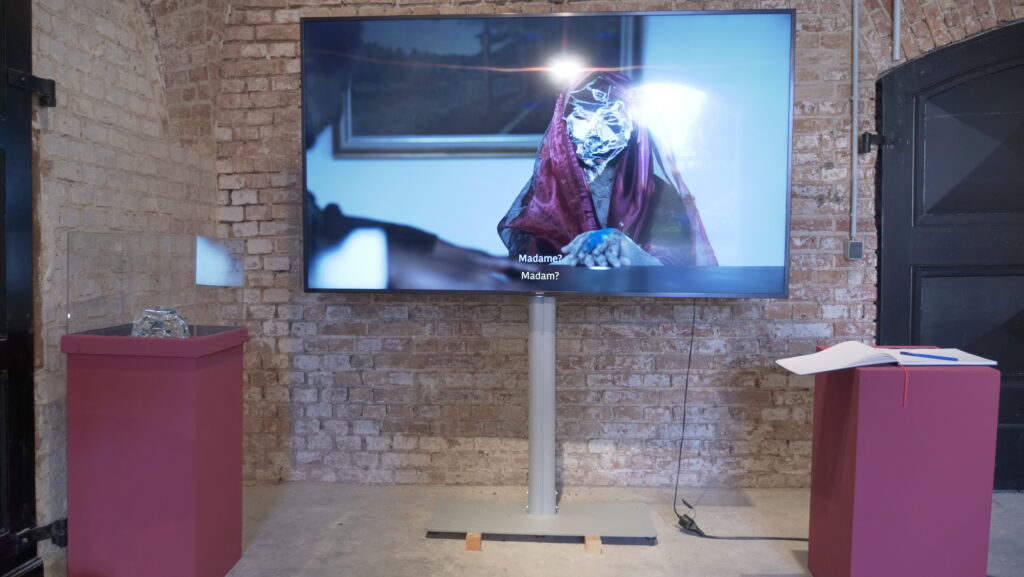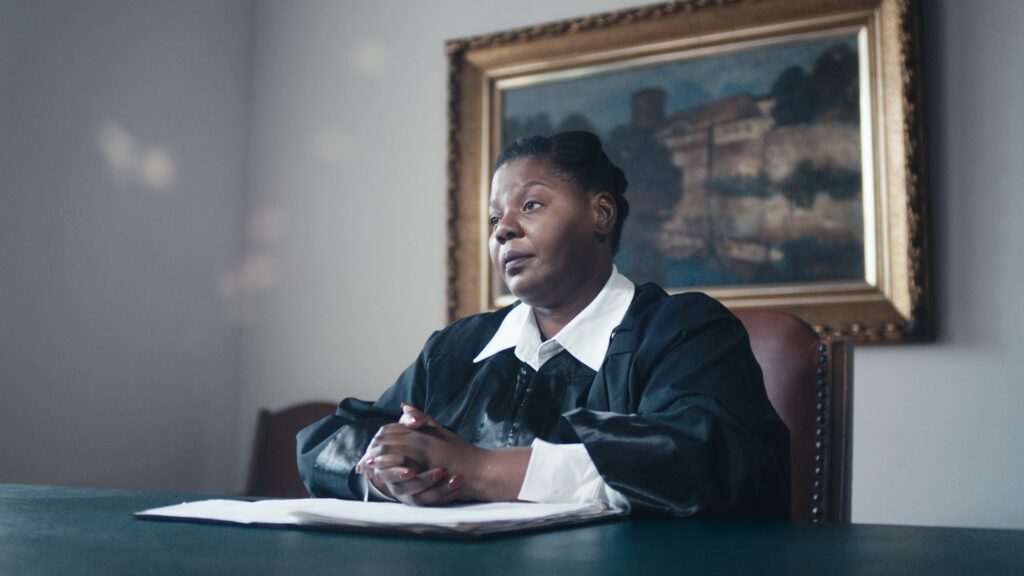
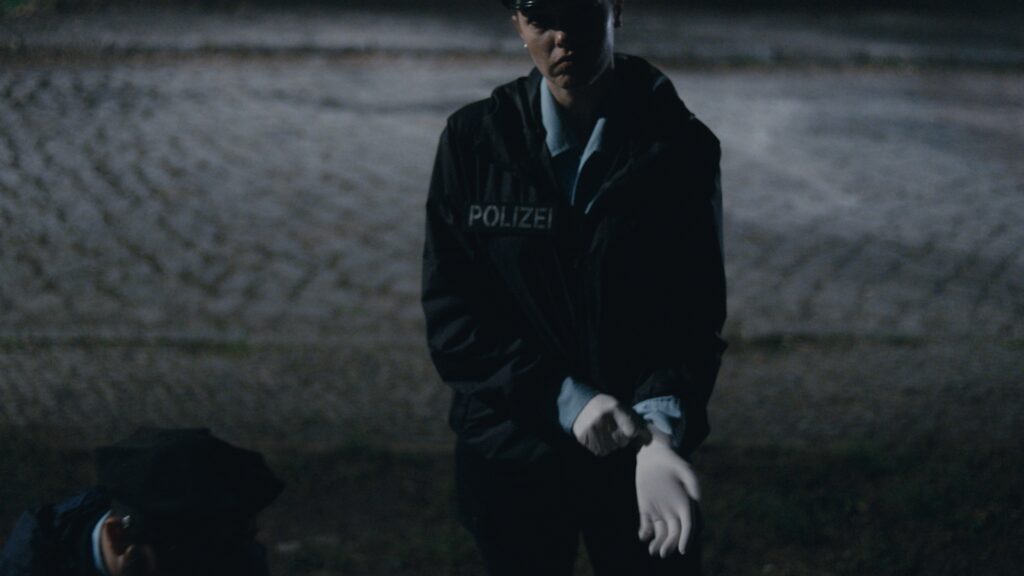
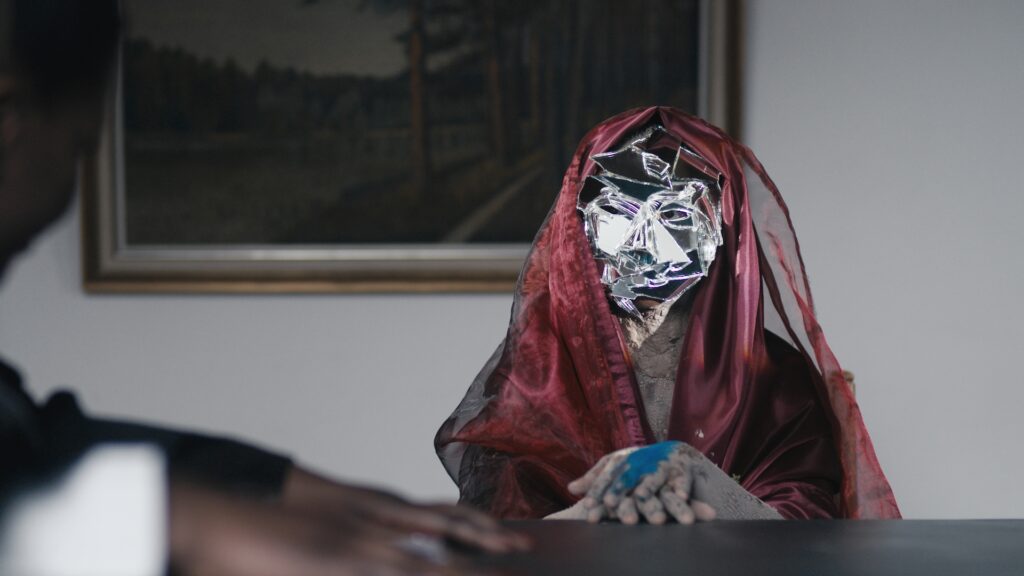
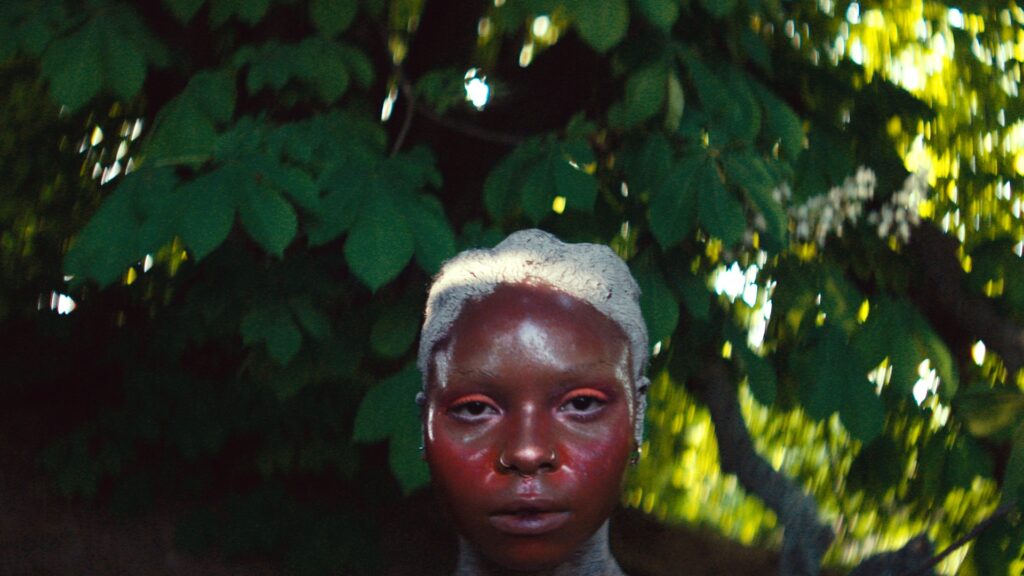
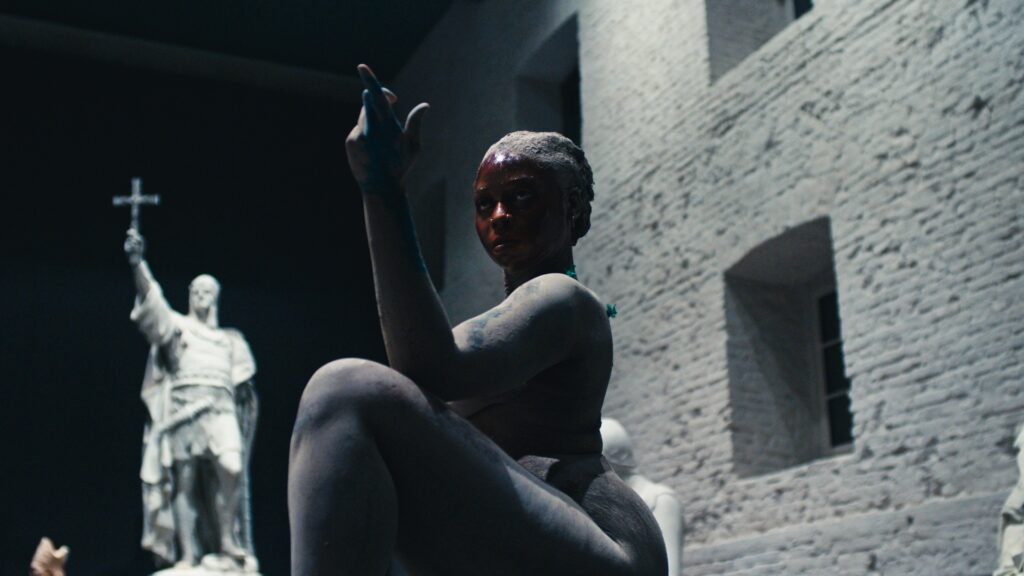
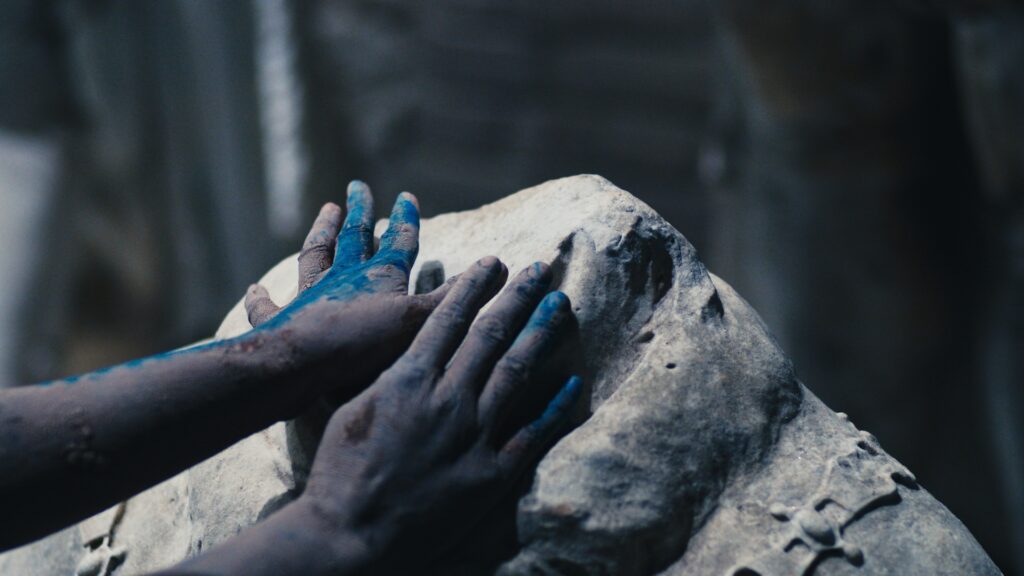
The Memory Guardians
In the court of the Memory Guardians, a trial ensues about what to do with the statue of the Kneeling Woman, following her defacement in Zehlendorf and relocation to the Zitadelle Museum in Spandau. While one counsel advocates that the statue be publicly displayed in the Zitadelle Spandau Museum to caution against “left-wing extremism”, another argues that she should be kept in the more private Schaudepot indefinitely to educate about difficult history. Yet another argues for her to be destroyed, given the racist beliefs of her creator, the violence against her and the messiness of contextualising all this Black pain for a public.
Writer, Director, Editor, Producer: Nnenna Onuoha
Co-Producer: Kathy-Ann Tan
Cinematography: Kleber Nascimento
AC: Klementine Medved
Gaffer: Jakob Reinhardt
Steadicam: Marco Müller
Location Sound: Nithin Shamsudhin
Hair & Makeup: Adrian Blount
Cast: Adrian Blount, Mable Preach, Massiamy Diaby, Manuel Talarico, Shelly Phillips, Talin Seigmann, Ahmad Baba
Exhibitions
The Memory Guardians. Schaudepot, Zitadelle Spandau Museum. Berlin, DE. 2024.
Since 2022, a special statue has been in the citadel’s display depot: the sculpture of a squatting African woman from the 1920s – without a head. The expressionistically exaggerated and racially interpreted statue (created by Arminius Hasemann (1888 – 1979)) was to be removed from the public space in 2020 and brought to Spandau Citadel. During the preparations, it was decapitated and smeared in June 2020. A political debate ensued as to whether the damaged artwork should be exhibited.
In her film, Ghanaian-Nigerian artist Nnenna Onuoha processes the real questions and arguments through a speculative legal procedure: The statue’s fate is egotiated in front of a court of memorial guardians. The kneeling woman herself is present and the second half of the film guides us through a dreamscape in which she walks through the grounds and the “Unveiled” exhibition. Full of longing and hope, she explores her own story and that of other wounded statues.
At the centre of the work is Onuoha’s examination of the culture of remembrance, in which certain perspectives still dominate the public space and certain histories, particularly concerning German colonialism, are not given visibility.

